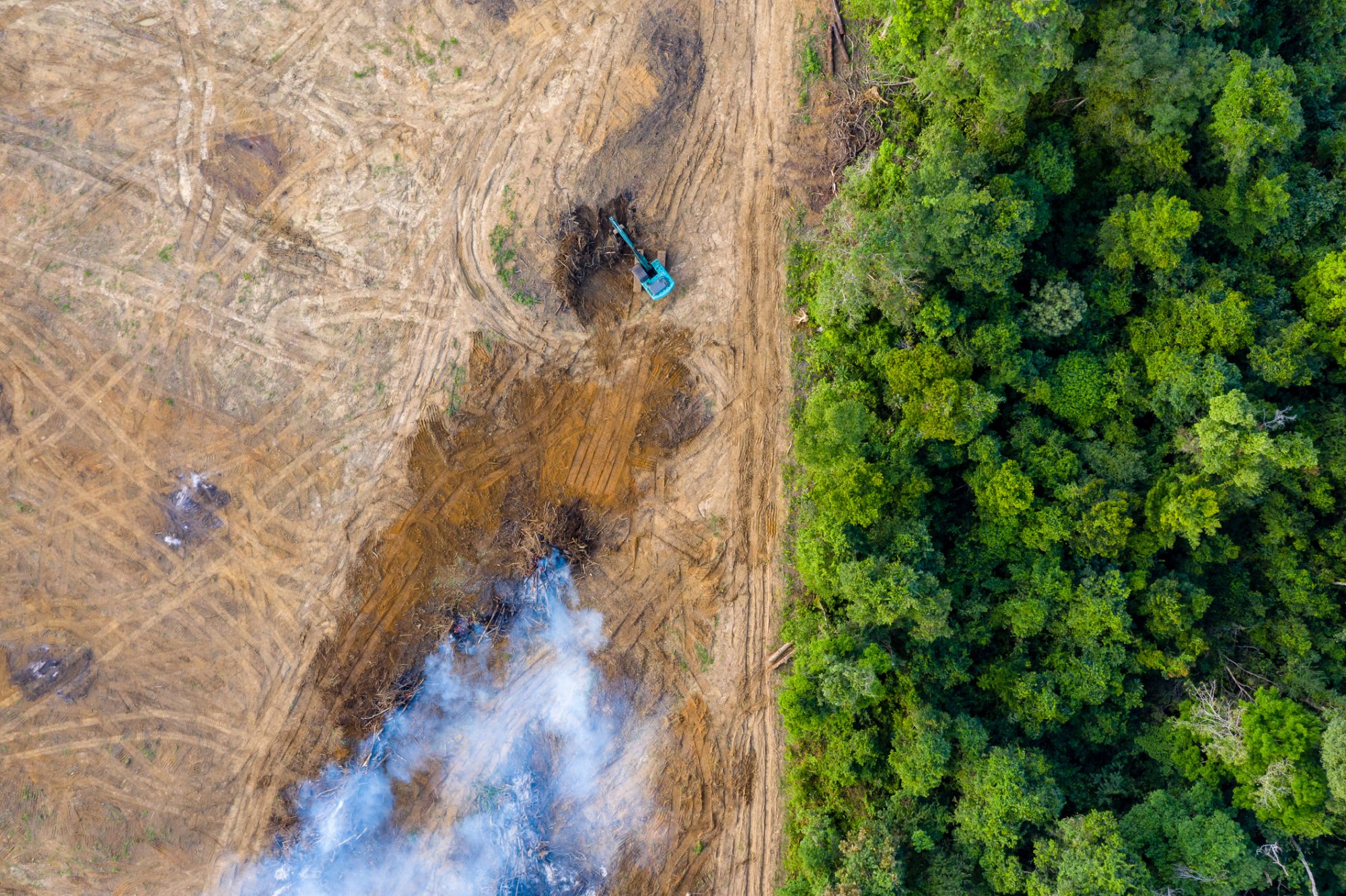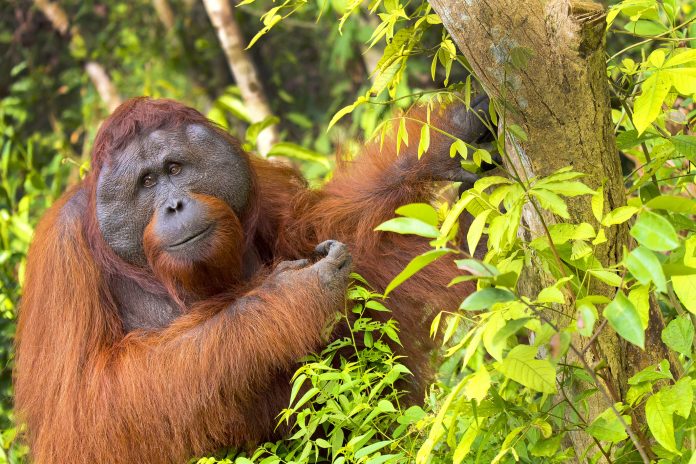Michelle Desilets, Founder and Executive Director of the Orangutan Land Trust, outlines the threats to the survival of orangutans and their habitats, and where solutions lie
According to the IUCN, all three species of orangutans – the Bornean Orangutan, the Sumatran Orangutan, and the Tapanuli Orangutan – are critically endangered. Threats to their survival have evolved as well as persisted over recent decades. At the same time, conservation actions to protect the orangutan and its habitat are somewhat effective at preventing the total extinction of the orangutan in the wild.
Human threats to the orangutans
Not surprisingly, human activity is the basis for most of the threats to orangutans. From the 1970s to the end of the 1990s, logging – both small-scale and industrial – cleared vast areas of orangutan habitat throughout Indonesia and Malaysia, the only two countries where orangutans are found. Local ‘slash and burn’ efforts to clear land for agriculture also played a part. As areas of forest opened up, orangutans became increasingly vulnerable to hunting, not only for consumption, but more often to capture infants destined for the local and international pet trade (both prohibited by national laws, which were seldom enforced).
Efforts to protect orangutans and their habitat
Conservation efforts during this period included targeted international campaigning against industrial logging and the subsequent establishment of large pulp and paper plantations, which had a limited but ultimately long-lasting global impact, leading to the establishment of the Forest Stewardship Council. At the same time, orangutan researchers and local and international NGOs created rescue centres for orangutans seized from the pet trade route. Some of these rescue centres evolved into rehabilitation centres, focusing on a comprehensive strategy to ensure orangutans develop the skills needed to return to the wild and eventually live independently. In addition, these centres provided education and outreach to local communities to change attitudes and behaviour towards the orangutan, and to learn techniques to mitigate human-wildlife conflict should an orangutan venture into a village, garden, or farm.
The effects of palm oil cultivation
In the early 2000s, the cultivation of oil palm began to gain pace, particularly in Borneo. While some oil palm plantations replaced ageing plantations of other crops, such as rubber or coconut, in many cases, plantations followed the total clearance of both primary and secondary forests for monoculture planting. Orangutans were displaced, either pushed into ever-dwindling patches of forest with insufficient food sources or into populated areas. Desperate and hungry orangutans were discovered to be consuming the newly planted oil palms, and as such, they were deemed an ‘agricultural pest’ by many plantation managers. It was common for bounties to be placed on the heads of such orangutans, encouraging plantation workers to capture and kill them.
The rescue centres began to try to persuade palm oil companies not to kill the orangutans, but rather to allow them to be collected and brought to their centres. One such centre, the Nyaru Menteng Project, which was designed to house 100 rescued orangutans, would find itself with over 600 orangutans by the end of the decade as a result of this wholesale clearance of orangutan habitat. It became evident by then that rescuing orangutans in such numbers, especially with minimal areas available and safe for their release, was not going to solve this issue.

Given the impact of palm oil production on biodiversity, the orangutan has become the iconic species associated with the adverse effects of the industry. Campaigns by NGOs around the world to draw attention to the issue effectively showcased this iconic megafauna species to drive the point home. As global awareness grew, so too did the pressure on the palm oil industry to change its ways. In 2004, the Roundtable for Sustainable Palm Oil was launched by WWF and a handful of companies in the palm oil supply chain, with the aim of defining sustainable production and consumption practices for palm oil and establishing them as the norm.
Along with WWF, leading orangutan conservation organisations, such as the Orangutan Land Trust and the Sumatran Orangutan Society, engaged with industry leaders within the RSPO. They worked to establish a standard for the production of sustainable palm oil that would, among other social and environmental criteria, prohibit deforestation and the clearing of areas containing ‘High Conservation Values,’ such as the habitat of orangutans. Such efforts appear to be bearing fruit: deforestation for oil palm in Indonesia has seen a significant decline in recent years, and scientists are discovering populations of orangutans surviving in landscapes fragmented by oil palm without harm coming to them from communities or workers. The voluntary aspirations for deforestation-free, ‘orangutan-friendly’ commodities, as pursued by the RSPO and companies committed to sustainable supply chains, are now being replicated in legislation, such as the EU Regulation on Deforestation-free Products.
Emerging threat of mining
Unfortunately, the threats to orangutans do not end with the unsustainable production of palm oil. Looming large (and already having a greater impact on orangutans in East Kalimantan, Indonesian Borneo) is mining, predominantly for coal, nickel, and gold, which decimates the remaining orangutan habitat anew. Conservation strategies to address this emerging threat are nascent, but, as with addressing logging and deforestation for monocultures, it will take collaboration among NGOs, the private sector, and policymakers around the world to find a working solution.











